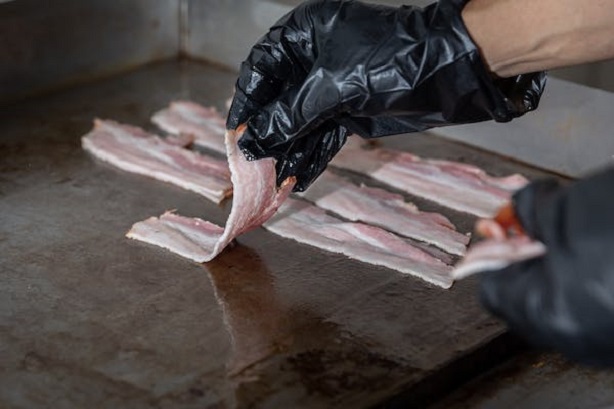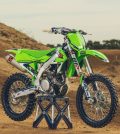How to Choose a Butcher’s Workwear
Because of the short-term nature of the meat they handle, butchers must wear protective clothing to safeguard themselves, their clients, and the food they sell. In order to help you assemble your uniform, this blog post details the best attire, the most appropriate style, and the origins of the traditional butcher’s wardrobe and style.
What Does a Butcher Wear?
The major function of the special uniform is to prevent cross-contamination between the butcher and the meat they prepare. The secondary most important role is the prevention of the butcher’s skin from coming into contact with any juices from the food they are cutting. This prevents the contamination of food and other surfaces by trapping pollutants on the worker’s clothing, which may then be easily removed. As such, traditional butcher attire includes an apron, a coat, trousers, shoes, gloves, and a trilby hat made of mesh.
Apron

You can keep your coat and pants clean while chopping meat by wearing a protective garment over them which is what the special apron for butcher is for. Not surprisingly, it’s an integral part of the attire.
This type of apron is typically constructed from a PU-coated polyester/cotton fabric, making it stain resistant and easy to clean – two of the necessities of any meat-cutting professional. An apron for butcher with adjustable design is another must. The self-fabric halter at the neck and the white tape at the waist make for a secure and custom fit.
A regular apron won’t cut it whether you own a restaurant or provide care in an industrial or residential setting. Put the well-being of your customers and employees first by investing in commercial butcher aprons now.
Origins of the Butcher’s Apron
In 1540, the first blue aprons were worn by certified butchers in York, England. It was illegal for anybody other than a butcher to wear the traditional butcher’s apron, coat, and cap. And in case you didn’t know, the pattern and amount of stripes reveal the butcher’s degree of expertise: one signifies they are self-taught, two that they have had a five-year apprenticeship, and three that they are masters of their craft.
As a sign of their cleanliness, many modern butchers now exclusively wear white aprons and uniforms in general. A white uniform pieces show every stain and appear dirty even if it was just worn once. The butcher’s outfit is typically white to demonstrate to consumers that they take cleanliness seriously.
Coat
The butcher’s coat, whether striped or solid, acts as an extra layer of armour for the whole body. The coat’s unique design—a dark blue base with narrow white stripes—conveys the wearer’s status in the establishment. It usually consists of pockets at the hips and a chest pocket with a pen area. A coat made of 100% cotton is your best bet because it is both long-lasting and functional. It can also be cleaned quickly and easily in either a washing machine or an industrial washer.
Trousers
Trousers designed to keep butchers protected and at ease are essential. The special catering pants are made to withstand the rigours of the food service industry. They can be cleaned quickly and easily thanks to the zip fly and the included pen holder, as well as the hip and back pockets.
Shoes
Shoes that offer good support and cushioning are essential for the feet of butchers and other food prep workers. If you want to maintain your workplace clean, you should wear shoes that are simple to disinfect. Butcher’s boots typically have a strong sole and a solid top made of leather or synthetic material like rubber, making them the safest footwear option. Steel toes are often added to the top of butcher’s boots to prevent the wearer from stumbling over sharp objects or stepping on nails.
Gloves

Appropriate gloves are essential for any butcher who wants to prevent the spread of disease when handling meat. To avoid product contamination, special butchering gloves are made with a low-linting nylon shell. They come in a variety of sizes and the wearer will find comfort in their soft, seamless design.
Mesh Trilby Hat
Stray hairs can contaminate work surfaces and products, but in addition to a tidy haircut wearing a mesh trilby cap can help prevent this problem. Quality mesh hats are made of resilient material which is also stain-resistant, while the mesh construction keeps wearers cool and comfortable.
Consider Branding Your Uniform

A well-designed uniform may convey the spirit of your company, whether it’s friendly, trustworthy, knowledgeable, sporty, etc. If done right, your uniform has the potential to serve as a platform for your brand, lending it an edge in the marketplace while simultaneously bolstering your company’s core values.
Maintaining a consistent brand identity is vital not only to give off an air of professionalism to clients but also to reap the rewards for your company and its staff. Employees in public-facing roles should act as walking billboards for the company and embody its core principles. Think about how your team will do as brand advocates while making decisions about the company’s future identity.






